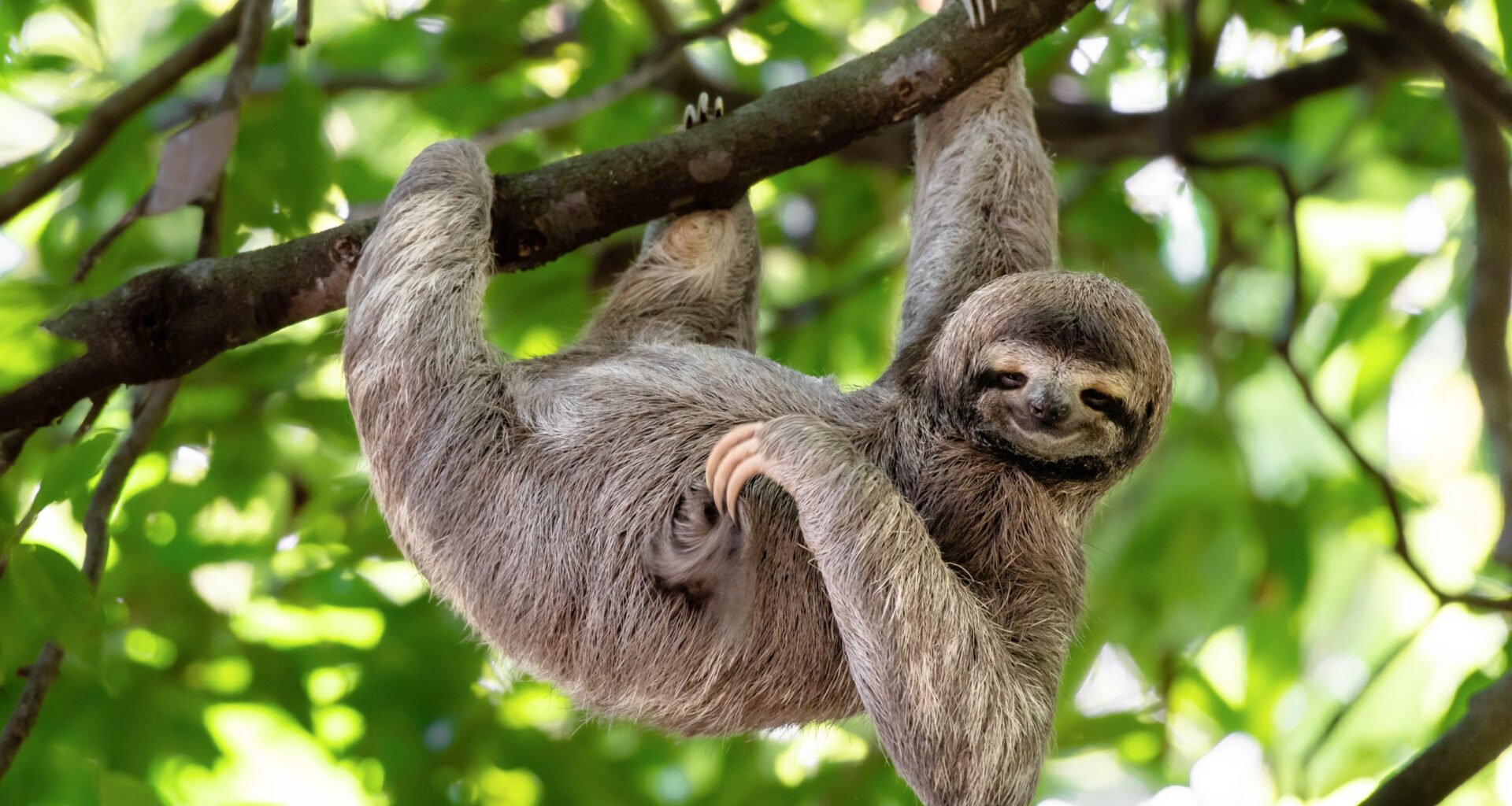Each year on October 20, International Sloth Day reminds us that slowness is not a flaw – it’s a survival strategy shaped by evolution.
Sloths owe their remarkable endurance to millions of years of precise evolutionary design. Their ancestors, the giant ground sloths, once roamed prehistoric South America, reshaping the land much like elephants do today.
When giant ground sloths disappeared, the soil changed, seeds stopped traveling as far, and forests grew differently.
Today’s tree sloths carry that ancient legacy in their own deliberate way. They remind us that in fragile ecosystems, balance – not haste – sustains life.
Celebrating sloths is a reminder that nature thrives through diversity of pace, not the dominance of speed. Their deliberate rhythm sustains the forest’s harmony, allowing countless other species to flourish.
Life at a slower pace
In the lush rainforests of Central and South America, the unhurried life of the sloth reveals a surprising world of skill and adaptation.
These tree-dwelling mammals move so slowly that their fur becomes home to algae and other tiny organisms, forming a kind of living camouflage.
What looks like laziness is actually a finely tuned survival strategy. By conserving energy and blending into the canopy, sloths avoid predators while thriving on a low-nutrient diet of leaves.
Despite their slow pace, sloths have surprising skills. They use their long arms to paddle across water with relative speed, proving that even the most sluggish animals can hide unexpected bursts of agility.
Why International Sloth Day matters
A sloth spends nearly its entire life hanging from trees. Every slow movement conserves energy, guards against predators, and keeps its body aligned with the forest’s natural rhythm. That rhythm is now at risk.
Rising temperatures threaten the delicate microclimates that sloths rely on for thermoregulation. They cannot sweat or pant, and even slight increases in heat can cause serious stress.
Conservation groups in Costa Rica and Brazil now monitor canopy temperatures using drones to map out danger zones before habitat loss becomes irreversible.
This innovative approach helps create micro-corridors that connect cooler forest patches, giving sloths room to migrate and adapt.
Researchers are also studying which tree species offer the best shade and moisture balance, planting them strategically to restore natural cooling.
Together, these efforts highlight how even small climate shifts can ripple through ecosystems, reminding us that protecting sloths means protecting the living climate around them.
Threats to sloth survival
Road networks and electric lines have become silent threats to sloths, cutting through their forest homes and forcing them into deadly crossings.
Every year, hundreds of sloths lose their lives while trying to move between isolated patches of trees.
Yet, hope grows through community-led efforts in countries like Panama and Ecuador. Local residents now report injured sloths, replant native trees, and construct canopy bridges that reconnect broken habitats.
These projects progress slowly, mirroring the calm persistence of the creatures they aim to save. Restoration does not always demand large-scale interventions or global campaigns; it thrives through steady commitment and local care.
Each planted tree or repaired branch becomes a bridge to survival. Protecting even one small patch of forest can sustain sloth families for generations.
Their story teaches that patience and consistency can achieve what speed and size often fail to deliver – enduring coexistence with nature.
Respecting sloths responsibly
True respect begins when curiosity turns into care. Many viral clips showing people holding sloths may appear charming, but they often mask distress. Sloths are sensitive beings, easily stressed by handling, bright lights, or noise.
Sanctuaries across South and Central America constantly remind travelers to keep their distance, allowing sloths to remain calm in their natural rhythm. Observing quietly from a distance helps them feel safe while giving people a glimpse into their serene world.
When humans slow down their need for physical contact or digital fame, they nurture a deeper bond with nature – one built on humility rather than possession.
By choosing to watch, not touch, we preserve the fragile peace that defines these remarkable creatures.
Slowing down the journey of life
International Sloth Day reminds humanity of the quiet virtues nature values most – patience, restraint, and empathy. In a world driven by speed, the sloth teaches balance.
Protecting these gentle creatures goes far beyond saving a single species; it means safeguarding entire rainforests, the microbes thriving in their fur, and countless unseen lives that share their habitat. Their survival reflects the health of the forests they inhabit.
In the stillness of the rainforest, the sloth reminds us that time itself is a living thing – meant to be shared, not conquered. Its slow journey through the treetops speaks to a balance our fast world has nearly forgotten.
—–
Like what you read? Subscribe to our newsletter for engaging articles, exclusive content, and the latest updates.
Check us out on EarthSnap, a free app brought to you by Eric Ralls and Earth.com.
—–

